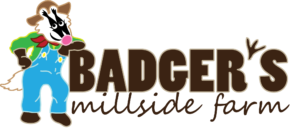
When you put chickens or turkeys out on pasture, there are two fundamental questions you need to consider. Why pasture and how do you house the birds?
If you fully grasp the why of the pasture model, you won’t take shortcuts in your housing and implementation. I’m primarily talking about the foundational principle of movement to fresh pasture approach that pastured poultry requires. If you choose to build a strong foundation on the principles of pastured poultry, then your system becomes healthier and more capable of surviving challenges.
There are a lot of companies that compromise the pastured poultry model today where fresh forage is replaced with access to more space. I spend a lot of time working through these issues in the podcast episode because it’s important to start off with a clear vision, and that vision will inform your shelter approach.
Pasture Shelter Considerations
There are a near infinite number of designs and modifications you can make to a pastured poultry shelter. And if you go shopping for a shelter without having a purpose, you may get sidetracked easily. For example, when I built my first shelter, I just did it like Joel Salatin, but I didn’t follow his instructions. That turned out to be a less than ideal shelter for our farm. After I got some experience, I realized I made a bad choice, and I chose something different, which was a smaller, lighter hoop house.
I expect you will go through multiple design iterations, but my goal in the episode to have you make a good choice, so your don’t find yourself needing to radically change your approach after a single season.
Here are the pasture shelter and management practices I cover in the podcast episode.
- Provide species appropriate shelters
- Protect from weather (including shade) and predators
- Make flock movement to fresh rooted-in soil vegetation possible
- Avoid static runs and continuous grazing
- Ensure ventilation and protect from drafts
- Add roosts where appropriate
- Add nest boxes for layers
I spend a fair amount of time discussing stocking density guidelines and the nuances you may encounter there. The quick guideline for a daily moved shelter where the birds are confined to a floorless shelter are as follows:
- Broilers: 1.5 to 2 sq. ft. to 8 weeks; 3+ sq. ft. at 16 weeks
- Layers: 3-5 sq. ft.
- Turkeys: 5 to 7 sq. ft.
The reason you need to know stocking densities is so that you can size your shelter appropriately and build/buy the appropriate amount. When you move to a day range setup, the stocking density inside the house becomes different.
Using layers as an example day range scenario, your housing may provide one square foot of space plus your additional pasture space. I discuss the reason behind one square foot in more detail in the episode.
There’s no magic formula for the paddock size. 108 square feet is a myth and a fake requirement; it’s not synonymous to pasture raised. Just know that if you give your hens 20 square foot of space in the paddock, you will be able to move slightly less frequently than if you only give them 10 square feet of pasture space. The model is based on movement, not access. So, time the frequency of movement to the impact on the pasture. Dirt is not your goal.
Pasture Shelter Designs
I’ve spent time assembling resources, such as guides, how-tos, and links to pastured poultry coop designs over at American Pastured Poultry Producers Association. View pastured poultry shelter designs.
If you need step-by-step and cut-by-cut instructions, it’s hard to beat John Suscovich’s Stress Free Chicken Tractor booklet. You can purchase a copy directly from John. If you purchase any of his books or packets, I get a commission (you pay the same price).
Learn more about John’s Stress Free Chicken Tractor Plans.
John also appeared on Pastured Poultry Talk to tell his story.
Relevant Episodes
Sponsors
 This episode of Pastured Poultry Talk sponsored by Windy Meadows Hatchery. Windy Meadows Hatchery supplies day old broiler chicks from their family run hatchery.
This episode of Pastured Poultry Talk sponsored by Windy Meadows Hatchery. Windy Meadows Hatchery supplies day old broiler chicks from their family run hatchery.
If you’re looking for a supplier for your chicks, talk to the people who are directly responsible for hatching and shipping your birds. Tell them you heard about them from Pastured Poultry Talk. Contact Windy Meadows Hatchery.
 If you’re looking for fences that work from the people who use them everyday, contact Premier at 800-282-6631 or visit their website to request an informational catalog.
If you’re looking for fences that work from the people who use them everyday, contact Premier at 800-282-6631 or visit their website to request an informational catalog.
 Badger’s Millside Farm is a distributor of Ready-to-Lay Pullets. Ask about full beak, non-gmo, certified organic, soy free, and more. Learn more.
Badger’s Millside Farm is a distributor of Ready-to-Lay Pullets. Ask about full beak, non-gmo, certified organic, soy free, and more. Learn more.
